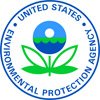Floating Classroom Event Hosted by EPA Regional Leaders to Promote Healthy Waters Along Mississippi River During National Water Quality Month

LENEXA, KAN. (AUG. 20, 2024) – Today on a barge docked near Alton, Illinois, EPA regional leaders held a first-ever, four-region event to promote water quality along the Mississippi River. EPA leadership from Regions 4, 5, and 6 joined EPA Region 7 Administrator Meg McCollister during National Water Quality Month to host a floating classroom and share their commitments to the river.
Together, these four regions serve 23 states – 10 of which have a border created by the river – and 116 tribal nations within the Mississippi/Atchafalaya River Basin (MARB).
Every August, EPA celebrates National Water Quality Month, which was established by the Agency in 2005 to raise awareness of water quality.
“Although our four EPA regions each have unique landscapes, legislation, industries, and community concerns, our mighty river connects us,” McCollister said. “Coming together to provide environmental education and express our commitments is an important step toward increasing water quality initiatives up and down the Mississippi River watershed.”
During the event, McCollister, Acting EPA Region 4 Administrator Jeaneanne Gettle, EPA Region 5 Water Division Director Tera Fong, and EPA Region 6 Administrator Dr. Earthea Nance held a moderated panel discussion. The panel highlighted the importance of water protections along the Mississippi River to an audience that included students, stakeholder organizations, and community leaders.
In addition to connecting attendees with information and organizations along the river, the leaders discussed steps individuals can take to protect water quality and funding opportunities from recent historic legislation under the Bipartisan Infrastructure Law.
The regions shared their priority commitments to Mississippi River water quality, including EPA Region 7’s Memorandum of Understanding with the Upper Mississippi River Basin Association to provide sampling support for per- and polyfluoroalkyl substances (PFAS) sampling in Missouri and Iowa.
Highlights from the event will be posted on Region 7’s YouTube page.
Floating Classroom
The event was held on Living Lands and Waters’ Mississippi River Institute Floating Classroom, an educational river barge that hosts student workshops on the importance of keeping our rivers clean.
River Tour
Following the classroom event, the four regional leaders boarded EPA Region 7’s new boat, dubbed the Nautical Vessel Laboratory (NaV-Lab), which is used for a variety of water quality sampling in the region’s lakes and rivers. The leaders toured the area where the Mississippi and Missouri rivers meet, called a confluence.
The tour then traveled south along the Mississippi River from Alton, Illinois, to St. Louis, and focused on the areas of water infrastructure, wetlands protections, environmental justice concerns, and managing flood risk. The leaders concluded the tour near the St. Louis Chain of Rocks Drinking Water Plant, where portions of the plant’s infrastructure are 100 years old, to learn more about the area’s aging water infrastructure. Through the Bipartisan Infrastructure Law, $50 billion is being invested in essential water, wastewater, and stormwater infrastructure upgrades throughout the country.
NaV-Lab can be operated in as little as 1½ feet of water and has an enclosed cabin that will allow EPA scientists to monitor the aquatic health of water bodies in various weather conditions. Aboard NaV-Lab, real-time water quality can be assessed, and EPA scientists can collect samples of fish and small aquatic animals, known as macroinvertebrates. NaV-Lab is also part of EPA Region 7’s emergency response fleet of vehicles.
Background
The Mississippi River is one of our nation’s longest rivers and a powerful economic engine. Stretching from Minnesota to the Gulf of Mexico, the river touches 10 states across four EPA regions and traverses 2,350 miles.
EPA encourages individuals to take an active role in protecting the water resources in their community. Getting informed, participating in public events, and providing feedback are all important ways community members can protect our waters. For more information, visit EPA’s Things You Can Do to Protect Water Quality page. August marks National Water Quality Month.
For more on EPA’s water quality initiatives throughout the Mississippi/Atchafalaya River Basin, see these links:
- Mississippi River/Gulf of Mexico Hypoxia Task Force
- EPA Formalizes Local-Federal Partnership to Protect Mississippi River Communities from Plastic Pollution
- Mississippi River Restoration and Resiliency Strategy
# # #
Learn more about EPA Region 7
View all Region 7 news releases
Connect with EPA Region 7 on Facebook and Instagram
Follow us on X: @EPARegion7
